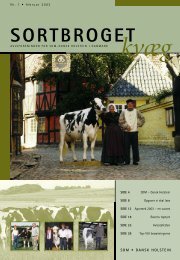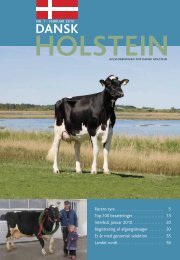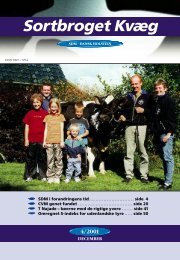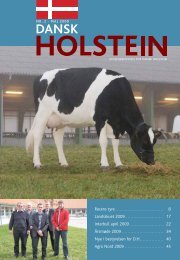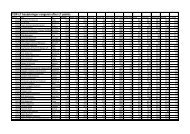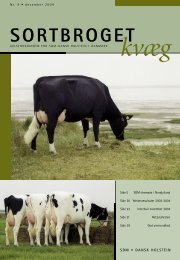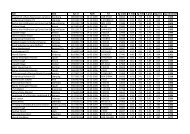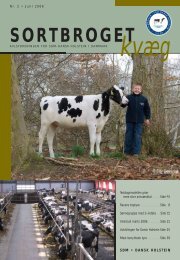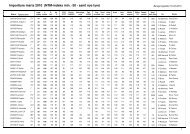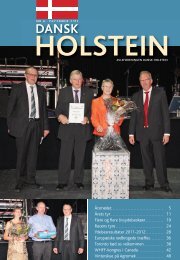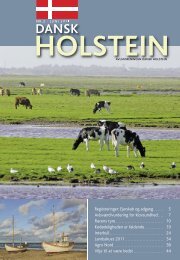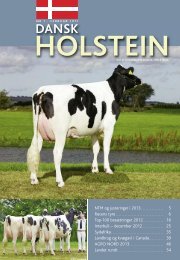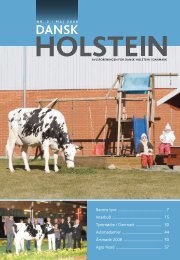2012 WORLD HOLSTEIN CONFERENCE - Dansk Holstein
2012 WORLD HOLSTEIN CONFERENCE - Dansk Holstein
2012 WORLD HOLSTEIN CONFERENCE - Dansk Holstein
You also want an ePaper? Increase the reach of your titles
YUMPU automatically turns print PDFs into web optimized ePapers that Google loves.
SESSION 5: ENSURING FARMSUSTAINABILITYEnvironmental-Friendly Cows – Reducing our EnvironmentalHoof PrintPAUL BOETTCHER (FAO)Paul Boettcher is currently an Animal Production Officer in AnimalGenetic Resources Management at the Food and AgricultureOrganization (FAO) of the United Nations in Rome, Italy. Previously,he was a Technical Officer, specializing in Animal Breeding andReproduction for the Animal Production and Health Section ofthe Joint FAO-IAEA Division for Nuclear Applications in Foodand Agriculture in Vienna, Austria. Earlier, Boettcher worked asa researcher in the Institute of Biology and Biotechnology forAgriculture of the National Research Council of Italy. He has alsoserved as a geneticist for ANAFI, the National Association of Italian<strong>Holstein</strong> Breeders, and as an Adjunct Professor and Senior ResearchAssociate for the Centre for Genetic Improvement of Livestock at the University of Guelph in Guelph, Ontario,Canada. Paul was also an invited speaker at the 10th WHFF Conference held in Sydney, Australia in 2000.The use of natural resources impacts the environment in five areas: 1)Energy, 2)Water, 3)Nutrients, 4)Greenhousegases and 5)Biodiversity. The greatest opportunities for directly decreasing environmental impacts of the <strong>Holstein</strong>cow seem to be enhancing utilization of nutrients and reducing emissions of greenhouse gases. Effects on “wild”biodiversity can be changed little, but improved management can increase breed and species biodiversity. Energyutilization decisions are usually made at the herd, rather than the cow level. Water intake varies among individualcows, but genetic effects have not been precisely quantified. Phosphorus and nitrogen are the two most importantnutrients in dairy production and significant genetic variation has been demonstrated for utilization of the latter, asmeasured by milk urea nitrogen. Methane emission is also heritable and genetic associations with rumen microbepopulations have been observed. In terms of biodiversity, intense selection for increased milk production has beenhighly successful, but has greatly decreased the effective population size of the global <strong>Holstein</strong> herd. Exportation of<strong>Holstein</strong> genetics has increased food security in many developing countries, but sometimes at the cost of decreasedgenetic diversity at the species level. New genomics tools may offer opportunities to decrease the environmentalimpact of the <strong>Holstein</strong> cow, but the current economic conditions, practically devoid of penalties with respect toenvironmental impact, provide little incentive for direct selection. Efficiency of production is generally favourablycorrelated with environmental impact; however, so emphasis on this trait may simultaneously increase the profitabilityof the <strong>Holstein</strong> cow and decrease her environmental hoofprint.25



